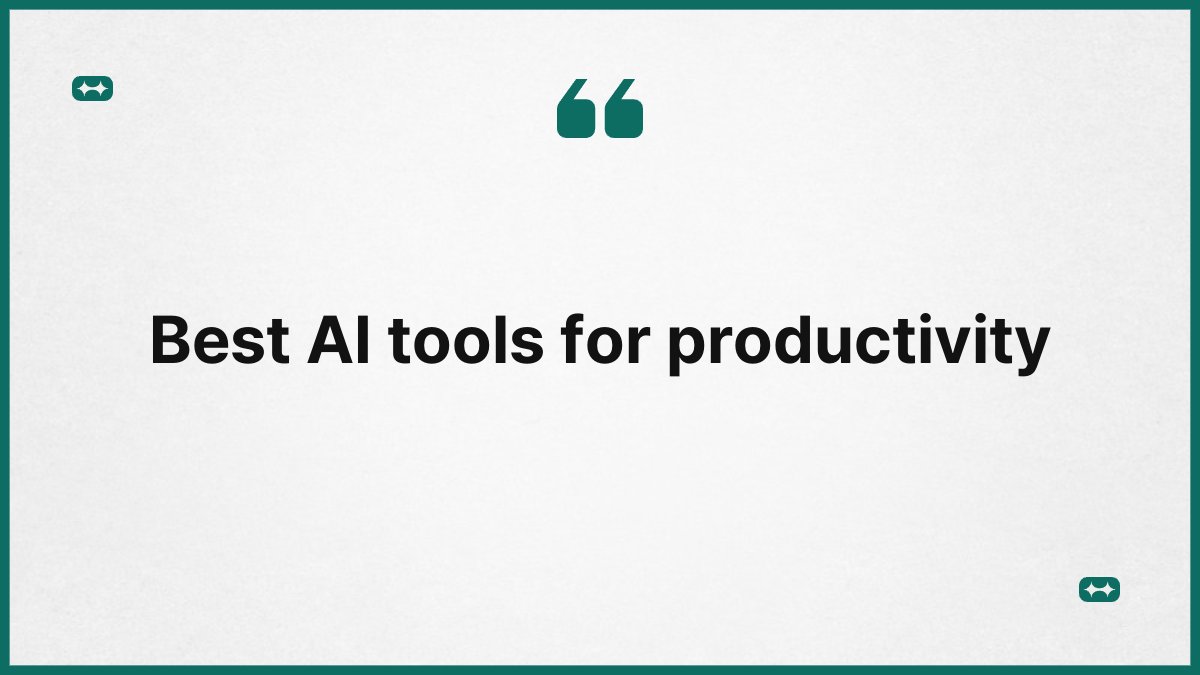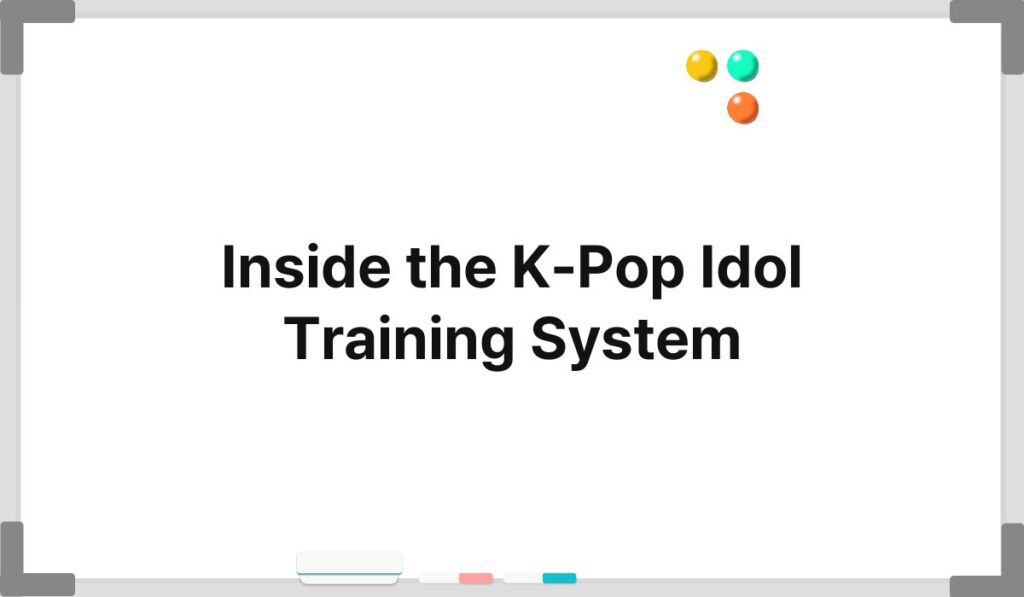[K-Bridge/Samuel] Best AI tools for productivity have emerged as essential assets in today’s fast-paced work environment.
These tools leverage artificial intelligence to streamline tasks, enhance collaboration, and optimize time management.
By automating repetitive processes and providing data-driven insights, they empower individuals and teams to focus on what truly matters.
As a result, productivity is significantly boosted, allowing users to achieve their goals more efficiently.
In this article, you will discover various AI tools that can enhance your productivity, including their features, benefits, and practical applications in different work scenarios.
You will also learn how to select the right tools for your needs and integrate them into your daily workflow.
AI-Powered Task Management Tools
Understanding Task Management with AI
Task management is crucial for maintaining productivity in any work environment.
AI-powered task management tools can help users prioritize their tasks based on deadlines, importance, and personal preferences.
These tools analyze user behavior and patterns to suggest optimal task sequences, ensuring that the most critical tasks are tackled first.
As a result, users can manage their time more effectively and reduce the stress associated with overwhelming workloads.
AI-driven task management tools also offer features that facilitate collaboration among team members.
They enable real-time updates, notifications, and shared task lists, ensuring that everyone is on the same page.
This level of transparency fosters accountability and encourages teamwork, ultimately leading to better project outcomes.
By leveraging these tools, teams can enhance their communication and streamline their workflows.
Moreover, these tools often integrate with other applications, creating a seamless experience for users.
For instance, they can sync with calendars, email platforms, and project management software.
This integration allows users to access all their tasks and deadlines from a single interface, reducing the time spent switching between applications.
By centralizing task management, AI tools contribute to a more organized and productive work environment.
Popular Task Management Tools
Several AI-powered task management tools stand out in the market, each offering unique features tailored to different user needs.
Trello, for example, utilizes a card-based system to help users visualize their tasks.
It allows for easy drag-and-drop functionality, enabling users to move tasks between different stages of completion.
This visual approach simplifies task tracking and enhances engagement.
Asana is another popular choice, known for its robust project management capabilities.
It offers various views, such as list, board, and calendar formats, catering to different user preferences.
Asana’s AI features include smart scheduling, which suggests optimal times for task completion based on user availability and workload.
Monday.com is also noteworthy, as it combines task management with team collaboration features.
Its customizable workflows allow users to tailor the platform to their specific needs, enhancing both individual and team productivity.
The platform’s AI algorithms analyze project data to provide insights that help users make informed decisions.
Benefits of AI Task Management Tools
The benefits of using AI-powered task management tools are manifold.
Firstly, they save time by automating routine tasks, allowing users to focus on higher-value activities.
For instance, automated reminders and updates help users stay on track without the need for constant manual input.
Secondly, these tools enhance decision-making by providing data-driven insights.
Users can analyze their productivity patterns and identify areas for improvement.
This self-awareness is crucial for optimizing workflows and achieving long-term goals.
Lastly, AI task management tools foster a more collaborative work environment.
By streamlining communication and ensuring transparency, they help teams work more cohesively.
This collaboration ultimately leads to higher-quality outputs and increased job satisfaction among team members.
AI-Enhanced Communication Tools
The Role of AI in Communication
Effective communication is vital for productivity, especially in remote work settings.
AI-enhanced communication tools facilitate seamless interactions among team members, regardless of their locations.
These tools utilize natural language processing to improve clarity and understanding in conversations, reducing the chances of miscommunication.
AI-powered chatbots are a prime example of how technology can enhance communication.
They can handle routine inquiries, provide instant responses, and assist users in navigating platforms.
By automating these interactions, chatbots free up human resources for more complex tasks that require critical thinking and creativity.
Additionally, AI tools can analyze communication patterns to identify areas for improvement.
For instance, they can assess the tone of messages and suggest adjustments to ensure a more positive interaction.
This feedback is invaluable for enhancing team dynamics and fostering a supportive work culture.
Leading Communication Tools
Several AI-enhanced communication tools have gained popularity for their effectiveness.
Slack, for instance, is widely used for team collaboration.
Its integration with various applications and AI features, such as smart notifications, helps users manage their conversations efficiently.
Slack’s searchable history allows users to retrieve important information quickly, minimizing time spent searching for past discussions.
Microsoft Teams is another powerful tool that combines chat, video conferencing, and file sharing.
It leverages AI to enhance meeting experiences, such as providing real-time transcription and translation services.
This feature is particularly beneficial for global teams, as it ensures that language barriers do not hinder communication.
Zoom, known for its video conferencing capabilities, has integrated AI features to improve user experiences.
Virtual backgrounds, noise cancellation, and automated meeting summaries are just a few examples of how AI enhances the platform.
These features contribute to more professional and productive meetings, ensuring that participants can focus on the content rather than technical issues.
Advantages of AI Communication Tools
The advantages of using AI-enhanced communication tools are significant.
They streamline interactions, reduce misunderstandings, and foster a collaborative atmosphere.
By automating routine tasks, these tools allow team members to concentrate on more strategic initiatives.
Moreover, AI communication tools promote inclusivity by accommodating diverse communication styles and preferences.
They can adapt to different languages and cultural nuances, ensuring that everyone feels valued and understood.
This inclusivity is essential for building strong, cohesive teams that can work effectively together.
Lastly, these tools provide valuable insights into communication patterns, enabling teams to refine their strategies.
By analyzing data on response times, engagement levels, and interaction quality, teams can identify areas for improvement.
This continuous feedback loop enhances overall productivity and fosters a culture of growth.
AI Tools for Time Management
The Importance of Time Management
Time management is a critical skill for maximizing productivity.
AI tools designed for time management help users allocate their time effectively, ensuring that they focus on high-priority tasks.
These tools analyze user behavior and suggest optimal schedules, allowing individuals to make the most of their work hours.
AI-driven time tracking tools can provide insights into how time is spent throughout the day.
By identifying patterns and trends, users can pinpoint areas where time may be wasted.
This self-awareness is crucial for making informed decisions about how to adjust workflows and improve efficiency.
Additionally, AI time management tools often include features that help users set and achieve goals.
By breaking down larger objectives into manageable tasks, these tools provide a clear roadmap for success.
This structured approach reduces overwhelm and enhances motivation, ultimately leading to higher productivity levels.
Popular Time Management Tools
Several AI tools excel in the realm of time management.
RescueTime is a well-known application that tracks how users spend their time on various tasks and websites.
It provides detailed reports and insights, helping users identify distractions and optimize their focus.
Toggl is another popular choice, offering a simple yet effective time tracking solution.
Its user-friendly interface allows individuals to log their hours easily, while its reporting features provide valuable insights into productivity patterns.
Toggl also integrates with various project management tools, enhancing its utility.
Clockify is a free time tracking tool that offers robust features for both individuals and teams.
Its AI capabilities include automatic time tracking, which records hours spent on different tasks without manual input.
This feature is particularly helpful for users who struggle with consistently tracking their time.
Benefits of AI Time Management Tools
The benefits of utilizing AI tools for time management are extensive.
Firstly, they promote accountability by providing users with a clear overview of their time usage.
This transparency encourages individuals to take ownership of their productivity and make necessary adjustments.
Secondly, these tools help users identify time-wasting activities.
By analyzing data on how time is spent, users can eliminate distractions and focus on what truly matters.
This focus is vital for achieving long-term goals and maintaining a healthy work-life balance.
Lastly, AI time management tools enhance goal-setting and tracking.
By breaking down larger objectives into smaller, actionable tasks, users can monitor their progress and celebrate achievements along the way.
This sense of accomplishment is crucial for maintaining motivation and driving continued productivity.
AI-Driven Collaboration Tools
Enhancing Collaboration with AI
Collaboration is essential for productivity, especially in team-oriented environments.
AI-driven collaboration tools facilitate seamless interactions and information sharing among team members.
These tools leverage technology to streamline workflows, ensuring that everyone is aligned and working towards common goals.
AI can enhance collaboration by providing real-time feedback and suggestions.
For example, collaborative writing tools can analyze content as it is created, offering grammar and style corrections.
This immediate feedback helps teams produce higher-quality work and reduces the need for extensive revisions later.
Moreover, AI collaboration tools can automate routine tasks, such as scheduling meetings and distributing updates.
By handling these administrative responsibilities, teams can focus on more strategic initiatives that require creative thinking and problem-solving.
This shift in focus ultimately leads to higher productivity and better outcomes.
Leading Collaboration Tools
Several AI-driven collaboration tools are making waves in the market.
Google Workspace, for instance, offers a suite of applications designed for seamless collaboration.
Its AI features include smart compose and suggestions in Google Docs, which enhance the writing process and improve efficiency.
Notion is another powerful collaboration tool that combines note-taking, project management, and team collaboration features.
Its AI capabilities include automated task assignments and reminders, ensuring that team members stay on track.
Notion’s flexibility allows teams to tailor the platform to their specific needs, enhancing overall productivity.
Miro is a visual collaboration tool that enables teams to brainstorm and plan projects together.
Its AI features include smart templates and automated organization of ideas, making it easier for teams to visualize their thoughts and collaborate effectively.
This visual approach fosters creativity and innovation, ultimately leading to better project outcomes.
Advantages of AI Collaboration Tools
The advantages of utilizing AI-driven collaboration tools are significant.
They streamline communication and enhance transparency among team members, fostering a cohesive work environment.
By automating routine tasks, these tools allow teams to focus on higher-value activities that drive results.
Additionally, AI collaboration tools promote creativity by providing real-time feedback and suggestions.
This immediate input helps teams produce higher-quality work and encourages innovative thinking.
The collaborative nature of these tools also fosters a sense of community, enhancing team morale and engagement.
Lastly, these tools provide valuable insights into team dynamics and productivity patterns.
By analyzing data on collaboration effectiveness, teams can identify areas for improvement and refine their strategies.
This continuous feedback loop enhances overall productivity and drives long-term success.
AI Tools for Data Analysis
The Role of AI in Data Analysis
Data analysis is a critical component of informed decision-making in any organization.
AI tools designed for data analysis can process vast amounts of information quickly and accurately.
These tools leverage machine learning algorithms to identify patterns, trends, and insights that may not be immediately apparent to human analysts.
AI-driven data analysis tools can automate routine tasks, such as data cleaning and visualization.
This automation frees up valuable time for analysts to focus on interpreting results and making strategic recommendations.
By streamlining these processes, AI tools enhance overall efficiency and productivity.
Moreover, these tools can provide predictive analytics, allowing organizations to anticipate future trends and make proactive decisions.
By analyzing historical data and identifying correlations, AI tools can offer valuable insights that inform strategic planning and resource allocation.
Popular Data Analysis Tools
Several AI tools excel in the realm of data analysis.
Tableau is a well-known platform that offers powerful data visualization capabilities.
Its AI features include automated insights and natural language processing, allowing users to explore data intuitively and discover trends easily.
Power BI, developed by Microsoft, is another popular choice for data analysis.
It integrates seamlessly with various data sources and offers robust visualization options.
Its AI capabilities include automated data modeling and predictive analytics, empowering users to make data-driven decisions confidently.
Google Analytics is widely used for web analytics, providing valuable insights into user behavior and engagement.
Its AI features include automated reporting and anomaly detection, helping organizations identify trends and make informed decisions.
By leveraging these insights, businesses can optimize their online strategies and improve overall performance.
Benefits of AI Data Analysis Tools
The benefits of utilizing AI tools for data analysis are extensive.
Firstly, they enhance efficiency by automating routine tasks, allowing analysts to focus on higher-value activities.
This shift in focus is crucial for driving informed decision-making and improving overall productivity.
Secondly, AI data analysis tools provide valuable insights that inform strategic planning.
By identifying trends and correlations, organizations can make proactive decisions that drive growth and success.
This data-driven approach is essential for staying competitive in today’s rapidly changing business landscape.
Lastly, these tools promote collaboration among team members by providing a centralized platform for data sharing and analysis.
By fostering transparency and accessibility, organizations can enhance their data-driven culture and empower employees to make informed decisions.
AI Tools for Content Creation
The Importance of Content Creation
Content creation is a vital aspect of marketing and communication strategies for businesses.
AI tools designed for content creation can streamline the writing process, enhance creativity, and improve overall quality.
These tools leverage natural language processing and machine learning algorithms to assist writers in generating engaging and relevant content.
AI-driven content creation tools can automate routine tasks, such as proofreading and editing.
By providing real-time feedback and suggestions, these tools help writers produce higher-quality work with fewer revisions.
This efficiency is crucial for meeting tight deadlines and maintaining a consistent content schedule.
Additionally, AI tools can analyze audience preferences and trends, guiding content creators in producing material that resonates with their target audience.
By leveraging data-driven insights, content creators can enhance engagement and drive better results.
Leading Content Creation Tools
Several AI tools excel in the realm of content creation.
Grammarly is a widely used writing assistant that offers real-time grammar and style suggestions.
Its AI capabilities include tone detection and clarity improvements, helping writers produce polished and professional content.
Jasper is another popular AI content creation tool that specializes in generating written content.
It uses machine learning to understand user preferences and produce tailored content that aligns with brand voice and messaging.
This customization enhances the overall quality and relevance of the content.
Copy.ai is also noteworthy, providing users with AI-generated copy for various formats, including social media posts, blogs, and marketing materials.
Its user-friendly interface allows writers to input keywords and receive instant content suggestions, streamlining the writing process.
Benefits of AI Content Creation Tools
The benefits of utilizing AI tools for content creation are significant.
Firstly, they enhance efficiency by automating routine tasks, allowing writers to focus on higher-value activities.
This increased efficiency is crucial for meeting deadlines and maintaining a consistent content schedule.
Secondly, these tools improve the overall quality of content by providing real-time feedback and suggestions.
This immediate input helps writers produce polished work with fewer revisions, ultimately enhancing audience engagement and satisfaction.
Lastly, AI content creation tools empower writers to leverage data-driven insights.
By analyzing audience preferences and trends, these tools guide content creators in producing material that resonates with their target audience.
This alignment is essential for driving better results and achieving marketing goals.
Choosing the Right AI Tools for Your Needs
Assessing Your Productivity Goals
Choosing the right AI tools for productivity begins with assessing your specific goals and needs.
Consider the areas where you struggle the most, whether it be time management, collaboration, or task organization.
By identifying these pain points, you can select tools that address your unique challenges and enhance your productivity.
Additionally, consider your work style and preferences.
Some individuals thrive in visual environments, while others prefer structured lists.
Understanding your personal preferences will help you choose tools that align with your workflow and enhance your overall experience.
It’s also essential to evaluate the scalability of the tools you consider.
As your needs evolve, you want to ensure that the tools can grow with you.
Look for platforms that offer a range of features and integrations to accommodate your changing requirements.
Evaluating Tool Features
When selecting AI tools, it’s crucial to evaluate their features and functionalities.
Look for tools that offer automation, analytics, and collaboration capabilities, as these features are essential for enhancing productivity.
Additionally, consider the user interface and ease of use, as a complicated platform can hinder productivity rather than enhance it.
Integration capabilities are also vital.
The best AI tools should seamlessly integrate with your existing applications and workflows.
This integration minimizes disruption and ensures a smooth transition to new tools.
Lastly, consider the level of support and resources available for the tools you choose.
A robust support system can significantly enhance your experience and ensure that you can maximize the tool’s potential.
Implementing AI Tools into Your Workflow
Once you’ve selected the right AI tools, the next step is to implement them into your workflow.
Start by gradually introducing the tools, allowing yourself time to adjust and familiarize yourself with their features.
This gradual approach will help you avoid feeling overwhelmed and ensure a smooth transition.
Additionally, set clear expectations for how you plan to use the tools.
Establish specific goals and metrics to measure your progress and success.
This clarity will help you stay focused and motivated as you integrate the tools into your daily routine.
Finally, be open to feedback and adjustments.
As you begin using the tools, you may discover new ways to enhance your productivity.
Stay flexible and willing to adapt your approach based on your experiences and insights.
Conclusion
In summary, the best AI tools for productivity offer a range of features designed to enhance efficiency, streamline workflows, and improve collaboration.
By leveraging these tools, individuals and teams can optimize their time management, communication, and content creation processes.
The key to success lies in selecting the right tools for your specific needs and integrating them seamlessly into your workflow.
As you explore the various AI tools available, remember to assess your goals, evaluate features, and implement them thoughtfully.
By doing so, you can unlock your full potential and achieve greater productivity in your personal and professional endeavors.
Embracing AI technology is not just about keeping up with trends; it’s about empowering yourself to work smarter and achieve your goals more effectively.








